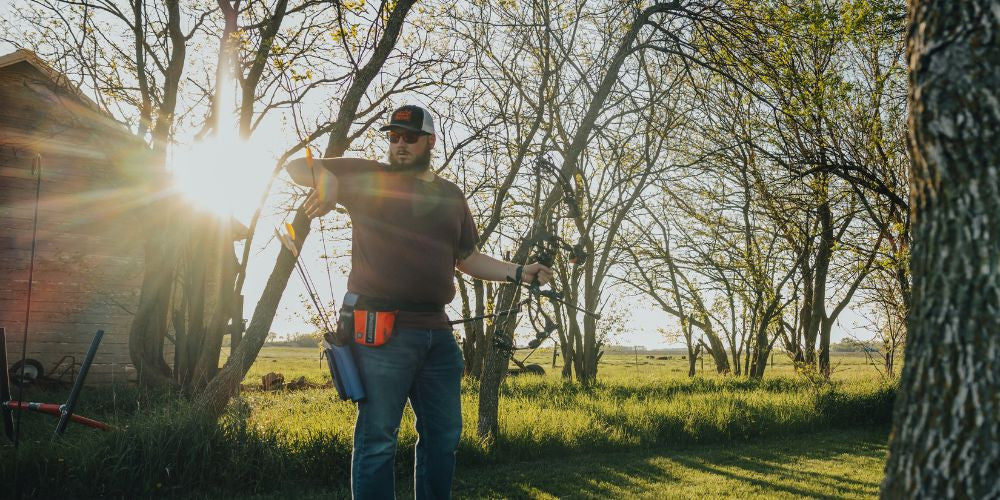By ANDRA BRYAN STEFANONI
http://www.joplinglobe.com/
The silver screen is full of them: Bows and arrows slung across the backs of heroes and heroines. Think of Hawkeye in "The Avengers," Legolas in "The Lord of the Rings," Merida in "Brave" or Katniss in "The Hunger Games."
Recently, the weapon that predates recorded history has made inroads into 21st Century schools, where archery has become one of the most popular activities.
Today, the National Archery in Schools Program includes 12,000 schools in five countries — or about 1 million youths. Among them: Sarcoxie, Carl Junction and Joplin.
'I was hooked'
Kaycia Woolsey, a special education teacher in Sarcoxie, grew up in a hunting family but never bow hunted — that was left to her brother. But after his death in 1999, Woolsey picked up the sport as a way to remain close to him.
“One time was all it took and I was hooked,” she said.
A friend encouraged her to try 3D archery, in which archers try to hit foam animal targets placed on trails in the woods. In 2006, she started competing in regional and national tournaments, and it became a passion she wants to pass on to students at Sarcoxie High School, where she signed on as the first archery coach and began building her program. That was three years ago. The first year, her team won the state championship, competing against much larger schools from St. Louis and Jefferson City.
Sarcoxie repeated that victory last year.
“The kids here absolutely love it,” she said.
Her team is comprised of 103 students in grades 6 through 12, while about 50 students in the fourth and fifth grades participate at the elementary school level.
Woolsey passed the sport on to her family, including her mom — who competes with her across the nation — her son, her aunts and cousins. She met and married her husband, David Woolsey, on the archery range. He's now the assistant coach at Sarcoxie. At their home, they practice on a 67-target course.
Sarcoxie starts after-school practices in two weeks to prepare for a competitive season that runs January through March and culminates with the Missouri State Championship.
“Hunger Games has definitely sparked an interest,” Woolsey said of the sport's growth. “But I think kids really like it because it is an individual sport and some who are intimidated by team sports seem to love to have this opportunity.”
In addition, most schools provide all equipment necessary.
“You can do it for the rest of your life, and you can do it with your family. You can enjoy the outdoors, the woods, nature, together.”
Carl Junction
When Chelsi Leggett interviewed for a physical education teaching job at Carl Junction three years ago, she asked her future principal if she could incorporate archery into the program. After being hired and getting certified, she started it in the classroom, then began an after-school team. She is assisted by fellow Carl Junction graduate Jessy Ellis-Forst, who competes and is preparing to go pro.
“It's grown tremendously,” Leggett said of their program. “Within our second year of competing, we were able to extend it down to our junior high, and this year it's grades four through 12.”
Total, 140 students compete; of those, about 50 are at the high school.
Senior Bayley Pollock is one.
"I love the thrill of it," Pollock said. "When you go to the line in a tournament, it's an adrenaline rush. You have in you the power to win."
Pollock said participating at school has led her to want to pursue competing in tournaments on her own after graduation.
“Hunger Games might have something to do with it,” Leggett said. “But it's also something that's different. There are a lot of kids who don't care for team sports, or aren't capable of being at the varsity level, but this gives them a chance to succeed at something physical.”
“Yeah, team scores matter, but you can be as good as you want individually,” she said.
Each team is comprised of 24 students. Each must have four males and four females, and the remaining 16 may be either gender or both. When competing, judges use the top 12 scores from members of each team to tabulate a team score.
“To qualify for state, you must have a certain team score or a certain individual score,” Leggett said.
Carl Junction competed at state last year and qualified for nationals.
The school provides equipment to sixth through 12th grade students, who must pay a fee; fourth- and fifth-grade students must provide their own bows because the popularity of the program has grown to the point where there simply isn't enough equipment.
“We're excited to be building our program,” Leggett said. “If you look at Sarcoxie, that's why they're so successful. They're building it up from fourth grade, so students are doing it longer, and that means they have a foundation, the form, the mentality already instilled.”
Leggett, who is an avid outdoor enthusiast herself, says she emphasizes outdoor recreation in her physical education classes and plans to add more competitive sports in coming years.
“I'm blessed to have administrators who back it,” she said. “I've been approved to start a trap shooting team and a pellet gun program, which we hope to start when we can focus on getting it going.”
Down the road, she would like to add fishing.
Joplin
Joplin archery coach Adam Bell said the addition of an archery program has been invaluable to his students. A bow hunter for 22 years, Bell wanted to start the team in order to have a positive impact on youths.
"My main goal is graduation. Getting them to graduate on time. Give them a reason to be there," he said.
Last school year, the first meeting he held to gauge interest before seeking school board approval saw a turnout of 220 students.
A team of about 90 began practice in January and made it to state, where they placed eighth and qualified for nationals. The team must raise funds to help keep a stock of 30 bows, enough arrows and targets, and pay for tournament entry fees. They're helped by Outback Archery, which has stores in Joplin and Columbus, Kansas, and has relationships with industry representatives.
But the benefits are bigger, Bell said.
"We don't allow any 'F's' — not even quarter or semester 'F's.' If we go to a competition on Friday, we pull grades on Wednesday. That's our drive: Quality attendance, positive behavior, pass everything," Bell said.
"Kids who shot with us last year couldn't go to state with us because of their grades — and they're great shooters. This year, I know of at least six of those kids returning that have gone from failing multiple classes last year to 'C's' and above."
"We're building quality students through that process as well as employable young adults when they leave us," he said.
Senior Shianne Smith said she loves archery because it's an individualized sport that doesn't discriminate.
"It doesn't matter what the archer's sport ability is, what clique you come from or how much money your family has to spend on equipment, there is a spot for everyone," she said.
"When it's time to shoot, everyone is on a level playing field."
Students also are getting their parents, siblings and grandparents involved.
"The response from the kids has been phenomenal. They want to be a part of it," Bell said. "That's fantastic — more satisfying to me than winning a state championship."
Growing sport
Carthage High School is starting an archery program this fall, and Seneca High School is expanding archery from its physical education classes to a competitive team. The Cherokee, Kansas, school district also is planning to expand it from beyond its Great Outdoors class to a competitive team in coming months.
"I guarantee that in the next three years, every school in the area is doing it," said Steven Burton, who owns Outback Archery.
 cust@legendarchery.com
cust@legendarchery.com 302 503 5767
302 503 5767 Whitestown, In 47075
Whitestown, In 47075



